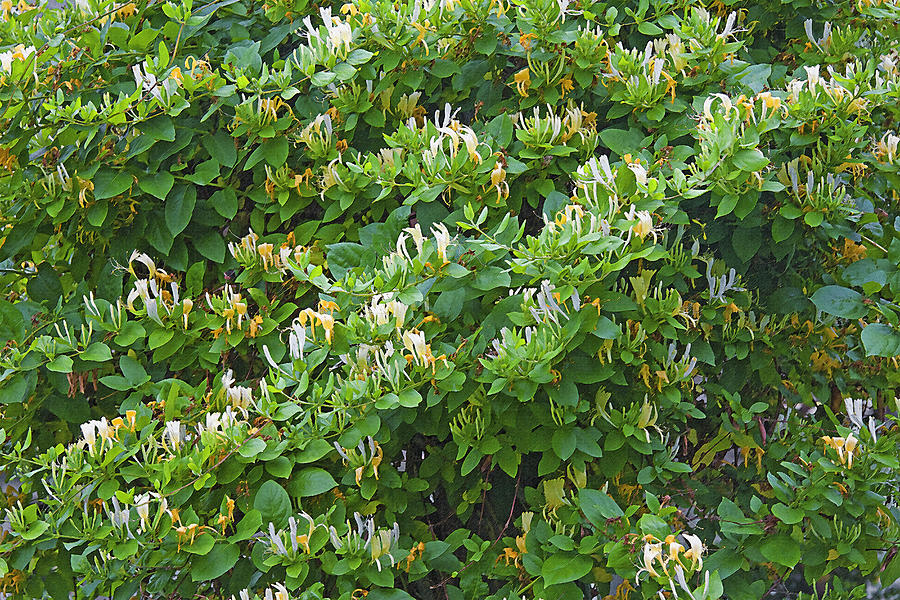
I live in Ohio, planting zone 5, where the temps can reach the 90s in summer and -10 below in winter. My big honeysuckle bush seemed to be winter-killed for a couple of years, but I checked it this spring and, --- it's alive!!!... All it needs is trimming of the dead wood and some basic all purpose fertilizer. Honeysuckles smell positively great and provide winter protection for birds who can shelter from storms among their thick branches. Hummingbirds are also attracted to honeysuckles. You can plant them in almost any location except hot, hot sunlight all day long. Their roots need a bit of shade, so light with dappled shade would be ideal. Mine is growing on the north side of my house.
Most species of honeysuckle, Lonicera, are hardy twining climbers, with a large minority of shrubby habit; a handful of species (including Lonicera hildebrandiana from the Himalayan foothills and L. etrusca from the Mediterranean) are tender and can only be grown outside in subtropical zones. The leaves are opposite, simple oval, 1–10 cm long; most are deciduous but some are evergreen. Many of the species have sweetly scented, bilaterally symmetrical flowers that produce a sweet, edible nectar, and most flowers are borne in clusters of two (leading to the common name of "twinberry" for certain North American species). Both shrubby and vining sorts have strongly fibrous stems which have been used for binding and textiles. The fruit is a red, blue or black spherical or elongated berry containing several seeds; in most species the berries are mildly poisonous, but in a few (notably Lonicera caerulea) they are edible and grown for home use and commerce. Most honeysuckle berries are attractive to wildlife, which has led to species such as L. japonica and L. maackii spreading invasively outside of their home ranges. Many species of Lonicera are eaten by the larvae of some butterflies.


No comments:
Post a Comment